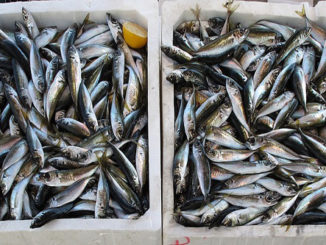Abstract
Aquaculture is considered as an option to cope with the food demand in several areas of the world. However, it is faced with the challenges created by population growth and the resulting competition for water, land, and other natural resources, and these challenges are being met by intensifying the culture operations. Criticisms have been arisen on this aquaculture, which are mostly related to the environmental impacts of the ecosystems. The important benefits of aquaculture like massive food production, employment opportunities and economical profits have led the community to seek for different strategies to reduce the negative impacts gradually, rather than just prohibiting it. At present aquaculture is responsible for different problems which are mostly related to the environmental health; however, some strategies which were being proposed during the recent era have proven that it is possible to achieve a sustainable aquaculture, but more importantly requires the commitment and willingness by all those involved in the development of aquaculture in the nation without any adverse effects on the environmental health.
Introduction
Globally demand for aquatic products is increasing with drastically increasing population. The fish consumption is increasing per capita (+13% from 2000 to 2012), and this demand is expected to increase by 57% between 2005 and 2050. The environmental impact of marine fish-farming is influenced by various managemental factors such as: species reared, culture method, stocking density, feed type, hydrography of the site and husbandry practices. In general, input of organic matter in terms of feed and nutrients (such as K, C and N) into a marine fish culture system will be lost into the environment through wastage of fish feed, excretion and respiration by marine organisms. Cleaning of fouled cages may also contribute an organic load to the water, periodically. Problems caused by such high loadings conflict with the other uses of coastal zone. The use of chemicals like therapeutants, vitamins and antifoulants and the introduction of pathogenic organisms and new genetic strains have also raised concerns on environment.
Impact of Aquaculture
Generally speaking, approximately one-fourth of the nutrients that are added through fish feed are incorporated into the meat of fish, whereas three-fourth will remain in the water. This organic matter which is relatively rich in organic carbon and nutrients such as nitrogen and phosphorus is released into the environment in particulate and dissolved forms. The release of these dissolved nutrients provokes an enrichment of the waters, leading to an increase in primary production in the affected areas, which in turn leads to the alterations in the composition of the algal species present in such areas. This increase in algal biomass leads to algal bloom and increased turbidity. The impact of fish farming seems to be more noticeable in the benthic region due to accumulation of biological wastes which ultimately leads to increased oxygen consumption and decrease in dissolved oxygen. Intensive marine fish farming has a high productivity and they tend to generate large amounts of particulate organic waste which might directly or indirectly affect the homeostasis of the environment and thus may lead to severe ecological impacts. Sometimes, they might even serve as negative feedback on aquaculture and greatly influence other coastal zone activities. Monitoring investigations of various degrees of complexity have been employed in order to minimize the harmful effects of aquaculture activities. Reviews of monitoring strategies and methods revealed the need for standardized approaches, which are flexible enough to cover the wide range of environments in which fish farms are located. Concerned by the effects on environment by the aquaculture installations, some researchers and institutions have developed some indicators for environmental management in some areas and also recommended the implementation of best management practices for the production of sustainable aquaculture.
Environmental Effects
The potential environmental effects of marine aquaculture on water quality are a primary concern for those interested in developing an ecologically responsible industry, and several reviews have broadly addressed this topic.
Waste discharge from marine fish farms in some areas can lead to negative environmental effects that could probably limit the growth of industry. Marine aquaculture practices in the past had resulted in degradation of environment, yet in some high production areas the industry had largely learned from mistakes and reduced the environmental impacts per unit production mostly through combination of improved feeds and also by proper siting of farms. Anoxic and reducing conditions may prevail along with the production of toxic gases (e.g. ammonia, methane and hydrogen sulphide) due to settlement of organic matter on the sea bed.
- Tilting towards anaerobic process due to increased loads of organic material to the sediment.
- Underneath the cages, an azoic zone was found leading to a decrease in benthos in the vicinity of the farm.
- Carbon dioxide produced by fish respiration is unlikely to create any adverse effect in the marine environment.
- The antibiotic resistance is emerging problem in fish culture. Because of its use in fish production there is chances of spreading resistant pathogens in human population.
- Marine culture activities continuously destroying coastal habitats which indirectly results in destruction of nurseries and spawning places of marine population.
- Along with these all effects other problems like ruining of coastal environment and depletion in current speed.
Regulating the Fish Culture Impact
There are some models developed to reduce the impact of fish culture on environment. The bioeconomic models and Modelling-On growing fish farms-Monitoring (MOM) are important model globally developed to combat this problem.
- Bioeconomic models: In this model one can measure the amount of settled waste material, its spread in all culturing area, its impact on the aquatic ecosystem. Along with this economical profit and our investment return can be determined.
- The MOM model: Modelling-On growing fish farms-Monitoring concept is based on measurement of integrated environmental impact assessment, monitoring MOM model operation can be done on small fish culture site or it can be used on wide geographic area.
- LENKA model: This model was firstly developed in Norway as a system to detect the potential of fish farming for both freshwater and marine aquacultures. The main aim is to find out the proper location for farming to avoid conflicts with other users. The model is used to calculate the effect of fish culture on the regional environmental zone.
Towards a Sustainable Future
- Marine fish culture has variable environmental impact depend on site of farming, water circulation, stocking density, different farming practices and type of feed used.
- Environmental impact assessment (EIA) helps to prevent hazard due to fish farming and can be used for sustainable development of the maricultural industry.
- For land-based fish farming effluent standards can be set so it will use to control effluent quality.
- Regular monitoring of water and sediment quality at fish culture sites would also be required to control impact.
- Precautionary measures should be followed. Citizens tend to become more responsible when they understand the overall impact of their activities on the environment. So, the farmer should be educated properly through workshops and conferences.
- Good husbandry practices are very essential in aquaculture. In this regard, extension officers should be readily available to offer extension services to farmers and others for the better use of available resources to improve farm management.
- Environmental regulations relating specifically to aquaculture operations should be passed and taken seriously with issues of enforcement and monitoring of compliance with environmental regulations receiving equal attention.
- Vaccination to prevent some diseases in farmed fish in areas like the USA and China has achieved great success hence dramatically reducing the use of drugs.
- Achieving reductions of environmental releases of nutrients and solids will require the cooperation of engineers and nutritionists.
- Integrated fish farming, a form of integrated multi trophic aquaculture where the output (waste) of one system are used as inputs (fertilizer and feed) for another, is a less waste generating system and more sustainable compared to other forms of aquaculture. Its practice should be encouraged.
Conclusion
Aquaculture can flourish with a sustainable development, if the industry is properly managed. Effects can be significantly reduced by careful site selection, control of stock density, improved feed formulation and integrated culture. Environmental impact assessment and monitoring should also be carried out to ensure culture activities are environmentally sustainable. Using MOM model, we can manage environmental impact of marine fish culture. Every form and level of aquaculture will have some impact on the receiving environment. Increasing efficiency in resource usage and working to minimizing adverse environmental impacts from the practice of aquaculture will go a long way to make the practice of aquaculture more sustainable. This will require the commitment and willingness to collaborate by all those involved, either directly or indirectly, in the development of aquaculture in the nation. Additionally, there is an urgent need to improve legislation and regulation for aquaculture. Only under such scenario, aquaculture will be a sustainable practice.
References
These will be provided on request to the authors. (kindly request in comment section below)







Be the first to comment